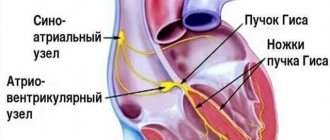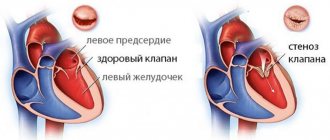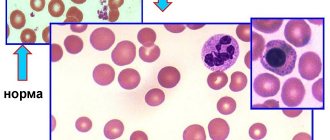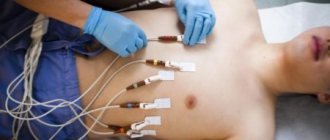Methods of treating the disease
Dandy-Walker syndrome, or malformation, is a congenital malformation of the brain, manifested in a violation of the structure and function of the cerebellum, blocking the outflow pathways of cerebrospinal fluid (CSF) from the cerebral ventricles and hydrocephalus developing as a result.
The exact causes of the pathology are unknown. For many years, it was believed that the only factor causing the development of the syndrome was hereditary predisposition. However, it later turned out that in children of women who do not suffer from genetic disorders, but who constantly consumed alcohol during pregnancy, this pathology is diagnosed with increased frequency. There has also been an increase in the incidence of Dandy-Walker syndrome in babies whose mothers had rubella or cytomegalovirus infection during pregnancy.
Clinical symptoms of the pathology include an increase in the size of the child’s head, protrusion of the occipital bones, hydrocephalus, increased intracranial pressure, convulsions, and hyperkinesis. In older children, coordination disorders, epileptiform seizures, nystagmus, and mental and physical development delays are observed. Most patients experience mental retardation, psycho-emotional disorders, and inability to socialize. The most common complications are cardiovascular pathologies, renal dysfunction, and ophthalmological diseases.
The therapy program includes courses of medications, surgical treatment, and physiotherapeutic procedures.
Drug treatment
In the case of a mild, mildly symptomatic form of the disease and the absence of serious complications, the patient is not prescribed immediate specific therapy. Israeli doctors are of the opinion that in such situations it is preferable to replace most common treatments with a course of symptomatic medications. To reduce the production and accumulation of cerebrospinal fluid, the patient is prescribed diuretics (diuretics). In parallel with preventing the development and progression of hydrocephalus, diuretics are used to prevent renal dysfunction and the occurrence of cardiac pathologies. In addition, the baby is prescribed muscle relaxants aimed at relieving increased muscle tone and normalizing coordination. The patient is also prescribed painkillers and sedatives.
Surgery
The only effective method, mandatory for the progression of the pathology, as well as in severe cases, is neurosurgical operations.
- Shunt surgery is the procedure indicated for most patients with Dandy-Walker syndrome. The essence of this operation is to install a special drainage tube with valves into the cerebral ventricle, through which the outflow of cerebrospinal fluid from the brain into the abdominal cavity occurs. Normalizing the outflow of cerebrospinal fluid helps eliminate hydrocephalus, lower intracranial pressure to normal values, weaken and relieve symptoms. The most noticeable disadvantage of this common technique is the clogging of the drainage tubes, the replacement of which requires a repeat operation.
- Ventriculostomy is a modern endoscopic operation aimed at creating an opening in the bottom of the ventricle for the outflow of accumulated cerebrospinal fluid into extracerebral cisterns. The neurosurgeon performs manipulations through a small hole made in the skull bone, visually monitoring the progress of the procedure on the monitor, where images recorded by the neuroendoscope video camera are transmitted in an enlarged format. The advantages of this method of surgical intervention are low trauma and short duration.
Physiotherapeutic procedures
During the course of treatment, as well as throughout life, to maintain normal well-being, the patient must regularly undergo various physical procedures. Relief from headaches and sedation are often achieved by taking decoctions of medicinal herbs. Elimination of excess muscle tension and improvement of motor functions is achieved when the patient takes baths with tinctures of valerian, mint, lemon balm, and pine oil additives. Electrophoresis with a number of medications also has a positive effect. In addition, the baby is prescribed therapeutic exercises and massage sessions.
- Neurosurgical operations in Israel
Symptoms of the disease
A similar disease in the development of the baby is determined when an ultrasound is performed at the beginning of pregnancy. Namely, all the symptoms of this disease are visible already by the 20th week. The main evidence of the appearance of pathology is all kinds of indicators indicating a lesion in the brain: a cystic formation in the fossa of the skull is clearly visible, the cerebellum is poorly developed, and the 4th ventricle is excessively dilated. Moreover, ultrasound indicators are more clearly expressed as the fetus develops.
In the future, you can notice the formation of clefts in the area of the hard palate and lips, improper formation of the renal system and defects. In the case where an ultrasound examination was not performed on a pregnant woman for some reason, signs of the syndrome can be seen with the naked eye after the birth of the newborn. Due to high intracranial pressure, such a child is often very restless. He develops hydrocephalus with muscle spasm and nystagmus. Sometimes there may be no symptoms of hydrocephalus.
Initially, you may notice the formation of the following symptoms:
- Atresia (overgrowth or natural defect) of the foramen of Magendie and Luschka;
- Expansion in the volume of the posterior fossa of the skull;
- Death of the cerebellar hemispheres;
- The appearance of cystic formation and fistula;
- Hydrocephalus at different stages.
This symptomatology is clearly visible during an ultrasound scan of the unborn child. For this reason, it is important for the expectant mother to regularly conduct research and undergo tests.
In children
This disease is considered a childhood disease. This disease manifests itself quite rarely; its symptoms are noticeable when the fetus is formed, during an ultrasound scan. If for some reason the examination is not done, this is fraught with quite serious complications for the child.
Subsequently, noticeable cerebellar symptoms appear. Older children experience a disorder of motor coordination, for this reason they have difficulty moving and walking (in some situations they are not even able to walk at all). The main symptom is almost incurable retardation in intellectual development. You can also notice the development of related problems: diseases of the renal and cardiac systems, improper formation of fingers, face and hands, as well as impaired visual function.
In adults
This disease is a clinical and anatomical variant of irregular dropsy. The pathology is characterized by such signs as atresia of the foramina in the brain and an increase in the volume of the 3rd and 4th ventricles.
Although this anomaly is considered natural, sometimes it begins to appear in a four-year-old child or later. For a long time, any signs of this disease do not appear. In some situations, decompensation is noticeable already in school or adolescence. In the rarest situations, the initial indicators of the disease may appear in an adult.
The main symptoms of this disease in adulthood are as follows:
- Gradual increase in head volume;
- Severe motor coordination disorder, the appearance of imprecise and wide movements;
- The formation of nystagmus, manifested in a flickering movement from one side to the other;
- Formation of frequent convulsive seizures;
- Severely increased muscle tone (sometimes spasticity appears). The muscles are constantly tense.
- Intellectual inferiority develops, manifested in the inability to recognize relatives, difficulty reading and distinguishing letters, and the inability to write anything.
Modern methods of diagnosing the disease
In Israeli medical centers, a comprehensive examination of the patient takes about three days to make a final diagnosis, decide on the need for immediate specific treatment and develop a therapeutic program.
- Day 1
- Day 2
- Day 3
On the first day of stay in the clinic, the patient is consulted by a leading pediatric neurologist.
At the appointment, the doctor gets acquainted with the medical history and the results of previous studies, talks with the child’s mother, clarifying the nature of pregnancy and childbirth, and collects a detailed family history. After a neurological examination, the patient is prescribed the necessary examinations. Completing the prescribed types of diagnostic procedures:
— Ultrasound of a pregnant woman is the main method of prenatal diagnosis; if signs of Dandy-Walker syndrome are detected in the embryo during the study, experts insist on terminating the pregnancy;
— magnetic resonance imaging (MRI) — serves as a method for both pre- and postnatal diagnosis of pathology;
— echoencephalography (EchoEG) — a screening method for examining patients;
— echocardiography (ultrasound examination of the heart);
- ultrasound examination (US) and computed tomography (CT) of the kidneys;
- angiography of cerebral vessels.
The results are reviewed by a council consisting of a pediatric neurologist and highly specialized specialists. After analyzing the indicators, doctors collectively establish a diagnosis and build a treatment regimen.
- Magnetic Resonance Imaging (MRI)
- Ultrasound
Main features
The disease is classified according to the degree of insufficiency in the development of cerebellar structures. Based on this, complete and incomplete forms of the disease are distinguished.
Manifestations of the disease in newborns and in adult children differ. A specialist can see the first signs on an ultrasound in the prenatal period, these include:
- The size of the fourth ventricle does not correspond to the norm for the duration of pregnancy - it is significantly enlarged.
- Underdevelopment of the cerebellum.
- The presence in the cranial fossa of a cavity filled with fluid - a cyst.
These signs give the doctor reason to make an assumption about the presence of the described disease. The diagnosis is confirmed by a combination of internal and external manifestations:
- Disproportion of the child's skull. The head seems disproportionately large.
- Craniotabes, in which the flat cranial bones in the area of the fontanelles become thinner, softening of the bone tissue occurs.
- The occipital bone loses its correct outline.
- Enlarged fontanels.
- Weakness of cry.
- Hydrocephalus is an accumulation of fluid caused by a violation of its outflow from the ventricles of the brain.
- Irregularly formed jaws, nasal turbinates.
- Nystagmus is involuntary oscillatory movements of the eyeballs.
- Uncontrolled convulsive contractions of the muscles of the arms and legs.
- Syndactyly is the fusion of the digital phalanges of the upper or lower extremities.
- Constantly bent position of the limbs, caused by tension in the muscle tissue (spastic tetraparesis).
- Motility disorders.
- Restless behavior.
In children over the age of one year, the pathology is manifested by attacks of headache, nausea and vomiting, irritability, impaired coordination of movements, vision problems, and mental and intellectual development delays.
Often the disease is accompanied by heart defects, kidney disease, and deviations in the development of facial bones.
Advantages of treatment in Israel
- World-renowned doctors with enormous clinical experience.
- Equipping clinics with high-precision equipment.
- Endoscopic neurosurgical operations.
- Medicines of the latest generation.
- Reasonable prices.
Timely, accurate diagnosis and an adequate therapeutic course will improve well-being and ensure the possibility of normal further development of the child. Don’t waste time, contact an Israeli clinic and trust the health of your baby to world-renowned doctors.
- 5
- 4
- 3
- 2
- 1
(0 votes, average: 5 out of 5)
Forms of manifestation of the disorder and complications
If we talk about the varieties of the disease, then there are two of its forms - complete and incomplete. In the complete form, the cerebellar vermis is completely absent; the incomplete form is characterized by partial underdevelopment of the cerebellar parts.
Dandy Walker disease is a natural abnormality that occurs in the brain. With such a disease, the cerebrospinal fluid system is insufficiently developed, as a result there is no absorption of cerebrospinal fluid, which leads to disruption of nutrition and metabolic processes. Because of this, abnormal development of the skull occurs as the bones begin to expand due to the pressure of the cerebrospinal fluid. The disease is diagnosed almost immediately after the birth of the baby, and the disease often manifests itself in girls; boys are susceptible to this disease in rare cases.









